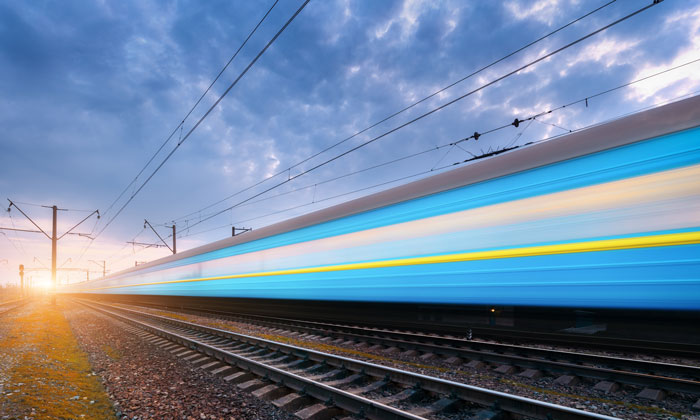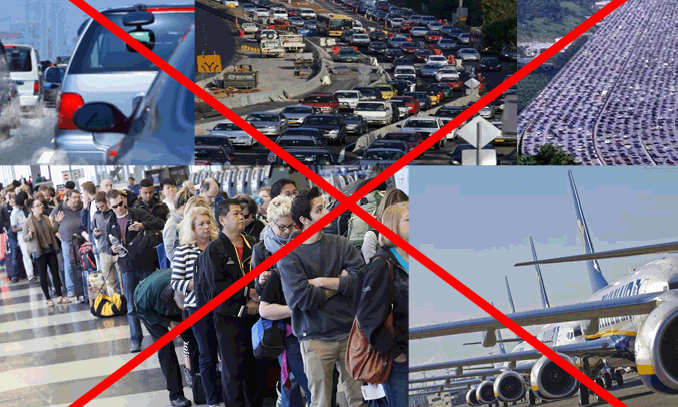Top 10 reasons to bring high-speed rail to America
Posted: 15 May 2018 | Global Railway Review | 4 comments
According to the US High Speed Rail Association (USHSR), congestion relief, safety, economic development and an alternative to flying are just some of the top 10 reasons to bring high-speed rail to America…


The US High Speed Rail Association (USHSR) states that America is in big trouble on multiple fronts, yet the majority of its ‘leaders’ are asleep at the wheel with no real solutions being worked on, evaluated, or proposed. In response, the USHSR has compiled a list of the top 10 reasons to bring high-speed rail to America to solve most of the current and future problems (epic congestion, foreign oil dependence/escalating resource wars, climate change, crumbling infrastructure, endless highway deaths, economic problems, etc).
1. Congestion relief
America faces epic congestion in every major metropolitan region of the country, costing $124 billion per year in wasted time and fuel. Road widening projects – justified by claims they relieve congestion – have only made congestion worse across America. High-speed rail is transformative and can reverse this mess – delivering 200mph transportation every train, every day – without delays or congestion, ever.
2. Alternative to flying
High-speed rail delivers +200mph transportation as an alternative to the flying nightmare. No hassles, no security lines, no delays, and plenty of room to work or play. Flight delays cost America more than $31 billion per year in wasted time.
3. Safety
Approximately 43,000 people are killed every year in car accidents in America, and another million more seriously injured. High-speed rail is the world’s safest form of transportation proven by decades of safe operations. Japan was the first nation to build high-speed rail in 1964 and has since transported 10 billion passengers without a single fatality! France has a similar record with their 30 years of high-speed rail operations, as do a number of other countries.
4. Energy/national security
America is in deep trouble due to our extreme oil dependency for 98 per cent of our transportation – consuming some 20 million barrels of oil every day, 70 per cent for transportation. Maintaining this enormous flow of oil requires America to dig up the oceans, protected national forests, the arctic tundra, risk our clean drinking water, our health and safety, and fight expensive wars all over the planet! None of this is sustainable, or desirable.
High-speed rail is the world’s greenest form of transportation and can be 100 per cent powered by renewable energy, bypassing the entire global-oil-military-supply-chain. The California HSR system under construction in the Central Valley will be powered 100 per cent by renewables.
5. Light freight solution
High-speed rail offers an alternative light freight shipping infrastructure in combination with its passenger transport, lowering the cost (and increasing reliability) of shipping light freight goods and perishables throughout the country. This would replace our inefficient light freight shipping network made up mostly of long-distance trucks, and airplanes, which has an enormous carbon footprint while clogging our highways.


6. Carbon solution
Transportation is the single largest source of carbon causing climate change. The American transportation system is the most inefficient on earth, with the majority of the country driving gas-guzzling, single-occupant SUVs hundreds of miles a day around sprawling communities. High-speed rail is the world’s greenest form of transportation and can be 100 per cent powered by renewable energy, making it zero carbon transportation.
7. Housing affordability
High-speed rail helps solve the affordable housing crisis by providing access to a wider housing market and taking pressure off the high price ‘hot spots’ by levelling out pricing at the regional scale. High-speed rail also spurs the development of additional rail systems including light-rail and streetcars, thereby opening up additional possibilities for affordable living, and the ability to live without a car, or less cars per household, saving all the huge expense of car ownership.
8. City revitalisation and sprawl redirection
High-speed rail redirects regional land development patterns into TOD (Transit Oriented Development) – compact, walkable, mixed-use, focused around rail stations. Feeder rail systems spur additional corridors of redirected development into compact, walkable forms.
9. Economic development tool
High-speed rail has the power to attract major real estate development around its stations, while also creating whole new industries with a lot of manufacturing needs, while launching a nationwide construction boom, followed by a new travel boom that will live on for decades.
10. Job creator in manufacturing and construction
A national high-speed rail system will create millions of good paying jobs building the infrastructure and system components, managing the rail systems, and operating the stations and related real estate development.
Visit the the USHSR website to read more about the Association’s top 10 reasons to bring high-speed rail to America.
Furthermore, Andy Kunz, USHSR President and Chief Executive Officer, will provide more information in his Leaders’ Series feature in Global Railway Review Issue 3 2018. Subscribe today and receive your free print or digital copy.
Related topics
Funding & Finance, High-Speed Rail, Infrastructure Developments, Passenger Experience/Satisfaction, Rolling Stock Orders/Developments, Route Development, Sustainability/Decarbonisation, Track Construction









John – If you facilitate “walking, cycling and transit” (to which yes, by the way) and get growth as a result, how do you construct an efficient high-capacity transport mode (eg HSR) if no provision has been made for its construction? HSR can make a difference on modal share: improvements on the London-Manchester route in the UK, construction of HS1-CT-LGV Nord London-Paris and LGV Paris-Lyon decimated the equivalent air routes. Discount airlines have bitten back but that’s arguably underwritten by a regime that unduly supports aviation when it probably shouldn’t. Road congestion growth may outstrip relief but without the rail and transit provision growth would be even greater.
‘Approximately 43,000 people are killed every year in car accidents in America, and another million more seriously injured.’
Not just car accidents, but bus accidents too, like this one:
https://www.cnn.com/2018/04/08/americas/canada-bus-crash/index.html
Benefits 1. Congestion relief & 2. Alternative to flying are totally illusory. The sprawling nature of development in USA and poor urban transit has created a self-fulfilling car-dependent society that is far beyond the scope of HSR to make any perceptible difference. European studies show negligible transfer from air or road to HSR and road congestion relief is lower than annual growth. It is pointless to advance the case for HSR over long distances for very few when the starting point should be to encourage non-car modes and patterns of development that facilitate walking, cycling and transit.
One TOD in a metropolitan area is not going to make much difference and piling up development around stations could, if successful, create route capacity and train operational problems.
This is a correct and logical assessment of why we need a comprehensive high-speed rail system in the USA. The first step in this direction should be a high-speed line from Boston to Los Angeles VIA New York and Chicago. Phase II for this route should follow immediately with extensions into Maine in the northeast and San Diego in the southwest. Follow-on lines, with new groundbreaking every six months, should be:
– Montreal and Toronto to Mexico City VIA Chicago.
– Montreal and Toronto to Miami VIA New York
– Vancouver to Mexico City VIA west coast major cities.
– Minneapolis and Chicago to Miami
– Minneapolis and Chicago to New Orleans
– Miami to Vancouver VIA Memphis, Saint Louis, Kansas City, Denver and Salt Lake City
– Miami to Vancouver VIA New Orleans, Houston, and Los Angeles
– Upper Michigan and Detroit to Miami VIA Atlanta
– Boston and New York to Los Angeles VIA Atlanta and New Orleans
– Boston and New York to Seattle VIA Chicago
– Boston and New York to San Francisco VIA Chicago
– Etc., etc.
Through tracks should be built quickly in Los Angeles and Boston, with ALL stations centrally located to serve as convenient transportation centers. Back-in stations such as formerly existed in Jacksonville, Florida would be prohibited. Idiot inconvenient situations where two stations existed in Seattle, Salt Lake City, Birmingham, Atlanta, Chattanooga, Columbia, etc., and four or more stations in Chicago, would be abolished.